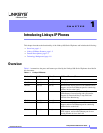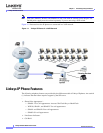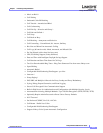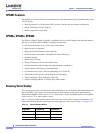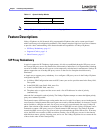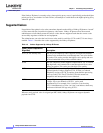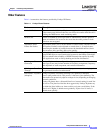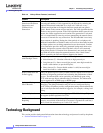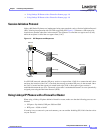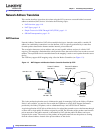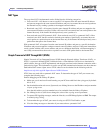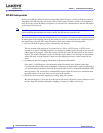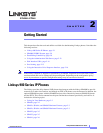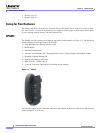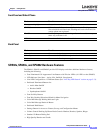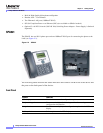
1-9
Linksys IP Phone Administrator Guide
Firmware Version 5.1
Chapter 1 Introducing Linksys IP Phones
Technology Background
• Using Linksys IP Phones with a Firewall or Router, page 1-9
• Using Linksys IP Phones with a Firewall or Router, page 1-9
Session Initiation Protocol
Linksys 900 Series IP phones are implemented using open standards, such as Session Initiation Protocol
(SIP), allowing interoperation with all ITSPs supporting SIP. Figure 1-2 illustrates a SIP request for
connection to another subscriber in the network. The requestor is called the user agent server (UAS),
while the recipient is called the user agent client (UAC).
Figure 1-2 SIP Requests and Responses
In a SIP VoIP network, when the SIP proxy receives a request from a UAS for a connection and it does
not know the location of the UAC, it forwards the message to another SIP proxy in the network. Once
the UAC is located and the response is routed back to the UAS, a direct peer-to-peer session is
established between the two UAs. The actual voice traffic is transmitted between UAs over dynamically
assigned ports using the Real-time Protocol (RTP).
Using Linksys IP Phones with a Firewall or Router
When using a Linksys IP phone behind a firewall or router, make sure that the following ports are not
blocked:
• SIP ports—By default, UDP port 5060 and 5061
• RTP ports—16384 to 16482
If security is not a concern in your environment, you can consider disabling SPI, if this function exists
on your firewall.
SIP UA
SIP UA
SIP Proxy
SIP Proxy
RTP
1
2
3
4
SIP Proxy



